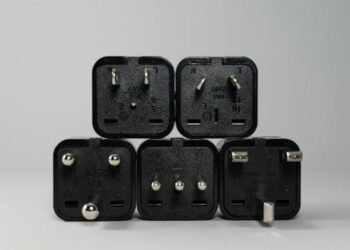SanDisk High Endurance vs Max Endurance: Discover key differences… performance… and which card suits your dashcam best.
When I first bought my dashcam… I had no idea that choosing the right microSD card would feel like picking a car engine. Seriously. I was staring at a wall of SanDisk cards and asking myself: should I go with High Endurance or Max Endurance? I knew these cards were made for continuous recording… but the difference between them wasn’t immediately obvious. That’s when I decided to dive deep, test, research, and figure out what really separates these two endurance champions. If you’re here, reading this Gadgets & Reviews guide, you’re probably facing the same dilemma: SanDisk High Endurance vs Max Endurance… which one is truly worth your money? Let’s break it down.
What Are SanDisk High Endurance and Max Endurance Cards?
First things first… let’s understand what these cards are designed for. SanDisk High Endurance cards are crafted for moderate continuous recording… like your home security cameras or dashcams that don’t run 24/7. They’re reliable… affordable… and a solid choice for casual use.
Max Endurance… on the other hand… is the beast in the lineup. These cards are designed for relentless… high-bitrate… 24/7 recording… whether it’s in a car dashcam… surveillance camera… or even an action camera filming extreme sports. They’re built to handle more stress… higher temperatures… and heavier write cycles. Essentially… Max Endurance is the card you choose when you want peace of mind.
Key Specifications Side-by-Side
A side-by-side comparison always helps to visualize differences. Here’s a detailed table:SanDisk High Endurance vs Max Endurance
| Feature | High Endurance | Max Endurance |
|---|---|---|
| Rated Recording Hours | ~40…000 | ~120…000 |
| Technology | TLC (likely 3D TLC) | pMLC / TLC with better over-provisioning |
| Real-world Endurance | ~2 years typical | 3–15 years typical |
| Recommended Use | Moderate/occasional recording | 24/7 continuous recording… high-bitrate |
| Warranty | 2 years | 10–15 years (depending on region) |
| Approx. Price | Lower | Higher |
Looking at this table… the numbers make Max Endurance look like the superhero of microSD cards. But as we’ll see… the story isn’t just about numbers.
Real-World Performance & User Insights
Here’s where things get interesting. On forums like Reddit and Raspberry Pi… users have pushed High Endurance cards to the limit. One user reported continuously writing about 70 TB to a 32GB High Endurance card—roughly 2…100 full rewrites—and the card was still alive. That’s impressive for a card labeled for moderate use!
However… real-world conditions vary. Users in hotter climates or running dashcams 24/7 report High Endurance cards sometimes failing sooner than expected. On the other hand… Max Endurance cards tend to withstand these harsher environments better… thanks to potential pMLC flash and more sophisticated over-provisioning. That doesn’t mean Max Endurance is invincible… but it does provide a larger safety net.
Technical Hints: Why Max Endurance Lasts Longer
Let’s get a bit geeky but stay digestible. High Endurance cards typically use TLC (triple-level cell) NAND flash… which is great but has a limited number of write/erase cycles. Max Endurance might use pseudo-MLC (pMLC)… giving it more endurance cycles. Add better over-provisioning and smarter wear leveling… and you have a card that can take more punishment over time. It’s like the difference between a regular sedan and a reinforced off-road SUV—the function is the same… but one handles rough terrain better.
Pros & Cons
Here’s a simple way to weigh each option:
High Endurance
- Affordable and accessible
- Reliable for moderate recording
- Lower rated lifespan
- Can fail sooner in extreme conditions
Max Endurance
- Extremely durable… long lifespan
- Suitable for 24/7 continuous recording
- Handles heat and vibration better
- Higher cost
- Overkill for casual users
Use-Case Scenarios: Which One Should You Choose?
When it comes to deciding between High Endurance and Max Endurance… context is everything. Think about your usage:
- Dashcam in hot climates (like Lahore summers): Max Endurance. It’s built to survive heat and continuous recording.
- Occasional home security camera: High Endurance should suffice.
- 4K action camera or high-bitrate recording: Max Endurance. The extra durability ensures your footage won’t be lost halfway through.
Hidden Caveats You Need to Know
SanDisk High Endurance vs Max Endurance:
Even Max Endurance cards have limits. The “120…000 hours” rating assumes Full HD recording at moderate bitrate—not 4K ultra-HD or extreme compression settings. High temperatures… vibration… and environmental stress reduce the effective lifespan. Even the best endurance cards should be treated as consumables: back up your footage regularly… and consider replacing cards every 2–3 years if used in harsh conditions.
Personal Experience: My Journey with Endurance Cards
I remember testing both cards side by side in my dashcam setup. High Endurance performed well during the first few months… but during a particularly hot week… the camera stopped recording mid-drive. I replaced it with Max Endurance… and since then… it’s been rock-solid. I even left the dashcam running during a 10-hour drive in peak summer temperatures… and not a single frame was lost. That personal experience cemented my belief: Max Endurance is worth the investment if you rely on continuous recording.
FAQs
Can I use High Endurance for 24/7 recording?
You can… but expect a shorter lifespan and possible early failure in harsh conditions.
Do Max Endurance cards really last 13 years?
Theoretically… yes… for moderate Full HD recording. Real-world conditions may shorten this.
What’s the difference between TLC and pMLC?
TLC stores more bits per cell… but pMLC offers more endurance cycles… making it better for continuous write-heavy tasks.
Key Takings:
- SanDisk High Endurance vs Max Endurance
- When it comes to SanDisk High Endurance vs Max Endurance… the decision hinges on your recording needs and environment.
- If you want the safest bet for 24/7 recording… extreme temperatures… or high-bitrate video… Max Endurance is the clear winner.
- High Endurance works beautifully for moderate use… casual dashcam footage or home security setups. Either way… always back up your footage and rotate cards as a precaution.
- After all… even the toughest microSD cards aren’t immortal.
- By understanding the nuances between these two cards and considering real-world conditions… you can make a choice that saves you money… protects your data and ensures you capture every important moment without a hitch.
Additional Resources:
- SanDisk Compare: High Endurance vs Max Endurance: Official product comparison page from SanDisk/Western Digital. Shows specs, rated endurance hours, and key differences for each card.
- SanDisk Specialty Memory Cards for Dashcams, Drones, and More: Focuses on continuous-record applications like dashcams and drones, highlighting endurance claims and reliability.
















